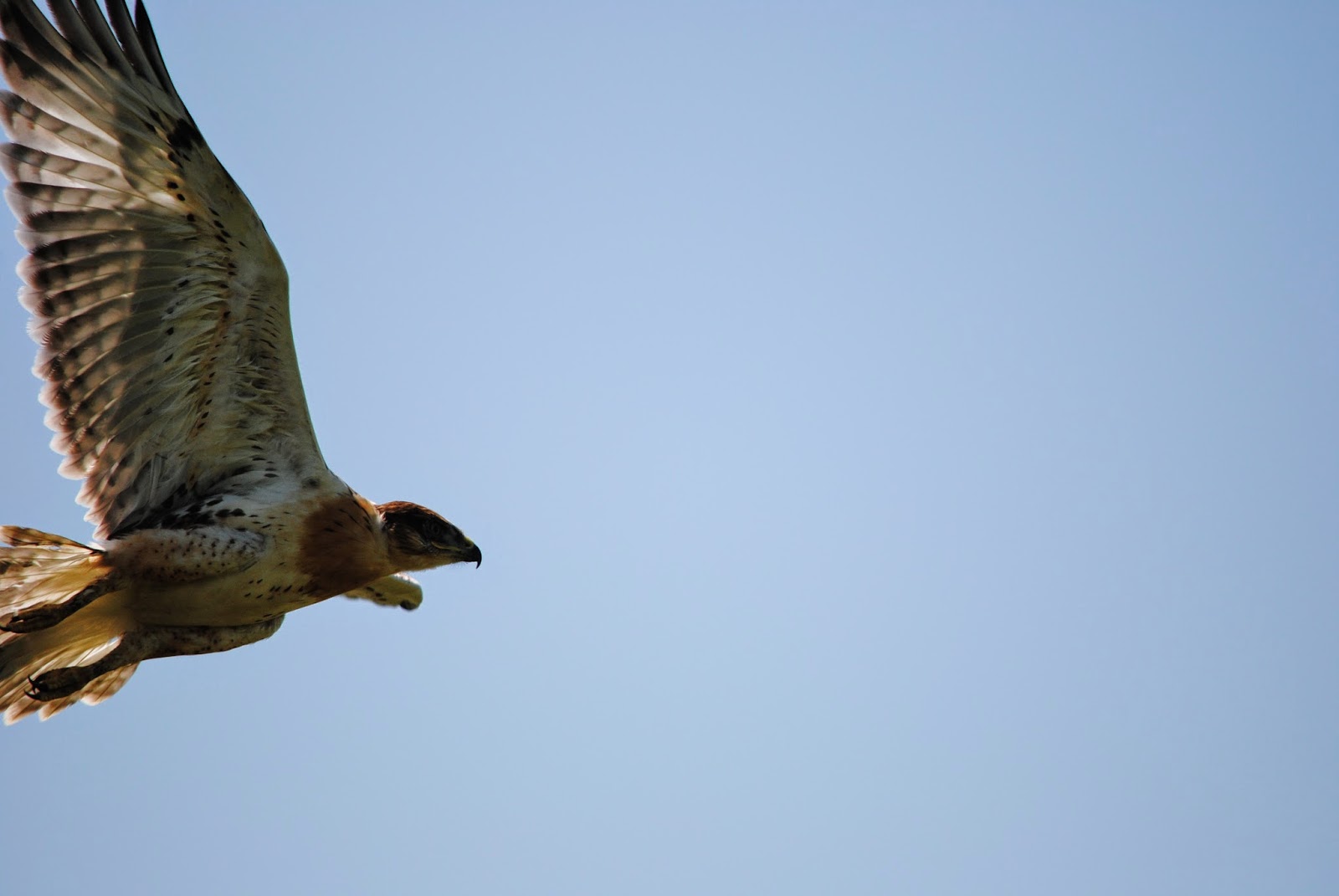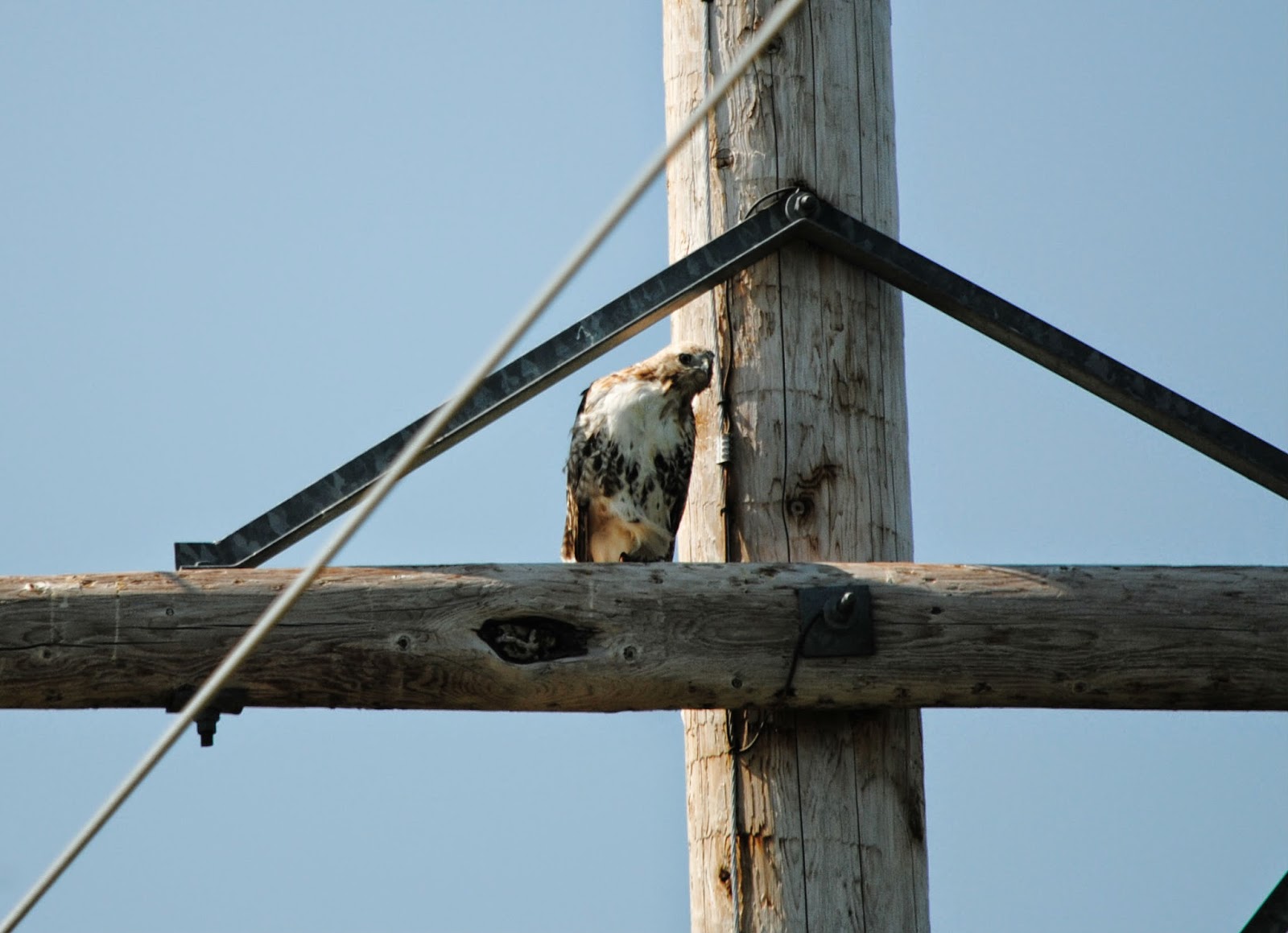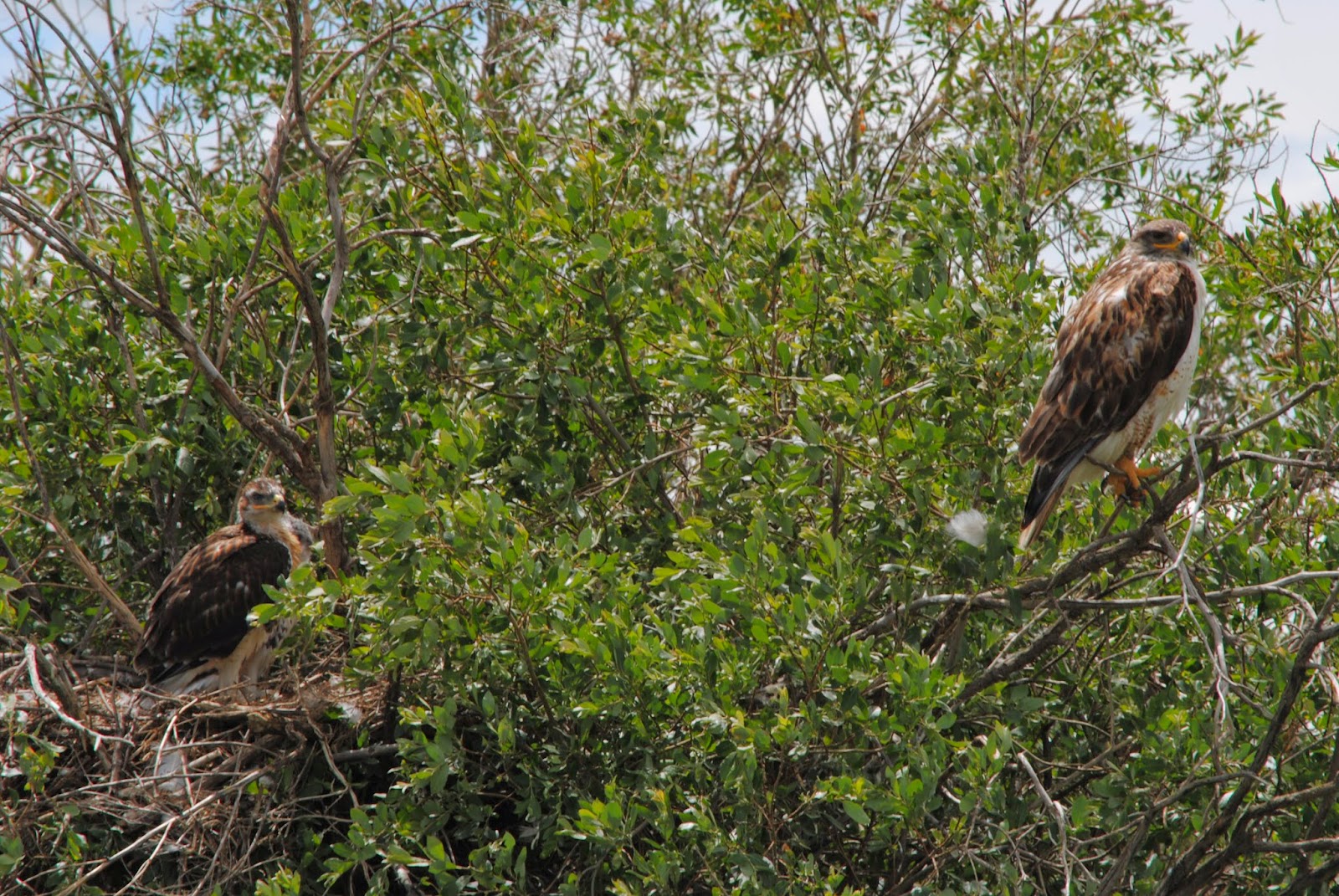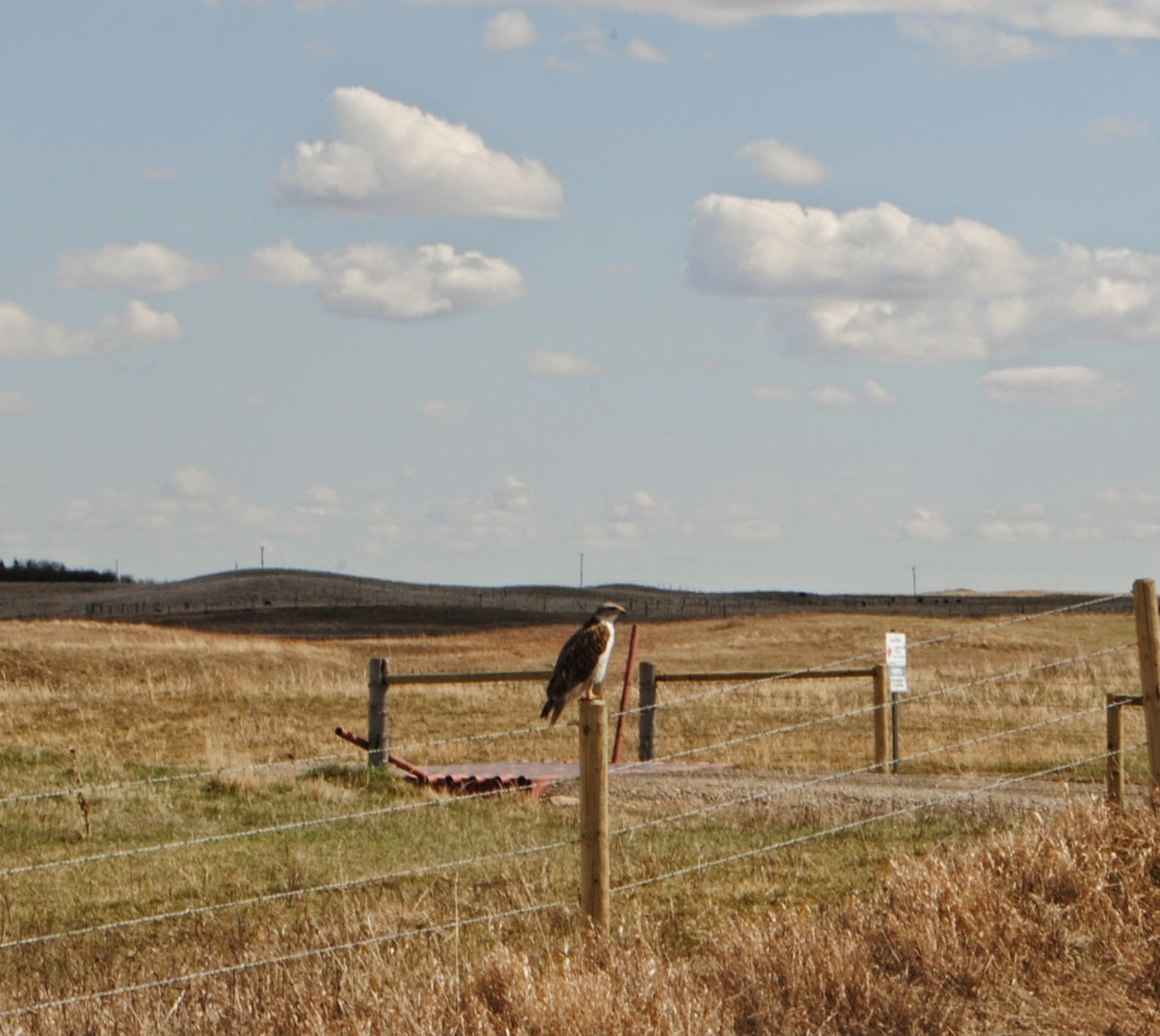(Parks Canada Photo)
It was only a few weeks ago that we were watching the flood waters of the Old Man River creep dangerously close to the bank across the road from our house. Here you can see how far from the river the debris traveled.
This is the view of the Old Man River from our field house on a good day. The river is now tame enough to kayak and tube down which I hope to do at some point.
Undeterred by threats of floods and fires, we continue to observe the hawks. This week I have been checking up on some of our nests South of Fort Macleod near the Montana border.
Here the native prairie grasslands gently roll along, sometimes being disrupted by a river and rocky outcrops. The landscape feels wild here, so when I came upon this Golden Eagle, it seemed perfectly in place.
The pure white tail with a dark band is seen only on hatch year Golden Eagles (this years young). The tails become progressively dark with each year as the bird matures. With smoggy skies in the background, this juvenile giant flew over a herd of cows, it's wingspan was almost the same length!
Unfortunately some of the fledglings decided the road was a great spot to sit and wait for mum and dad to deliver food. Many motorists see the birds in the road and figure they will move so don't bother to slow down. The young hawks, still learning to fly, lack the flight skills to move quickly and have yet to associate vehicles with danger. Road collisions are one of many human threats that the birds face each day. I chased this guy into the field for his own good.
At a different nest, I noticed the female was getting harassed by an Eastern Kingbird. Kingbirds are very defensive of their nests and will attempt pluck feathers and generally annoy raptors that get too close for comfort.
Looking up at the sky and paying little attention to where I was walking, there was suddenly a loud flapping in front of me! I had almost walked right into a very surprised FEHA fledgling!
Trying to look as big and scary as possible, it stretched it wings out and bared it's beak!
By the end of the week, all but a few late layers will have empty nests. The project will begin to focus more on assessing the perching sites around the nests and other significant habitat features.











































